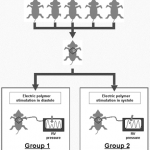 Arjang Ruhparwar, Patricia Piontek, Matthias Ungerer, Ali Ghodsizad, Sasan Partovi, Javad Foroughi, Gabor Szabo, Mina Farag, Matthias Karck, Geoffrey M. Spinks, Seon Jeong Kim
Arjang Ruhparwar, Patricia Piontek, Matthias Ungerer, Ali Ghodsizad, Sasan Partovi, Javad Foroughi, Gabor Szabo, Mina Farag, Matthias Karck, Geoffrey M. Spinks, Seon Jeong Kim
*Department of Cardiac Surgery, UniversityHospital of Heidelberg, Heidelberg, Germany;†ARC Centre of Excellence for ElectromaterialsScience, Intelligent Polymer Research Institute,University of Wollongong, Wollongong, New SouthWales, Australia; and ‡Center for Bio-ArtificialMuscle, Department of Biomedical Engineering,Hanyang University, Seoul, Korea
*Corresponding author.E-mail: ruhparwar777@yahoo.de.
원문 링크 : http://onlinelibrary.wiley.com/doi/10.1111/aor.12300/full
Abstract
Research into the development of artificial heart muscle has been limited to assembly of stem cell-derived cardiomyocytes seeded around a matrix, while nonbiological approaches to tissue engineering have rarely been explored. The aim of the study was to apply electrically contractile polymer-based actuators as cardiomyoplasty for positive inotropic support of the right ventricle. Complex trilayer polypyrrole (PPy) bending polymers for high-speed applications were generated. Bending motion occurred directly as a result of electrochemically driven charging and discharging of the PPy layers. In a rat model (n = 5), strips of polymers (3 × 20 mm) were attached and wrapped around the right ventricle (RV). RV pressure was continuously monitored invasively by direct RV cannulation. Electrical activation occurred simultaneously with either diastole (in order to evaluate the polymer’s stand-alone contraction capacity; group 1) or systole (group 2). In group 1, the pressure generation capacity of the polymers was measured by determining the area under the pressure curve (area under curve, AUC). In group 2, the RV pressure AUC was measured in complexes directly preceding those with polymer contraction and compared to RV pressure complexes with simultaneous polymer contraction. In group 1, the AUC generated by polymer contraction was 2768 ± 875 U. In group 2, concomitant polymer contraction significantly increased AUC compared with complexes without polymer support (5987 ± 1334 U vs. 4318 ± 691 U, P ≤ 0.01). Electrically contractile polymers are able to significantly augment right ventricular contraction. This approach may open new perspectives for myocardial tissue engineering, possibly in combination with fetal or embryonic stem cell-derived cardiomyocytes.